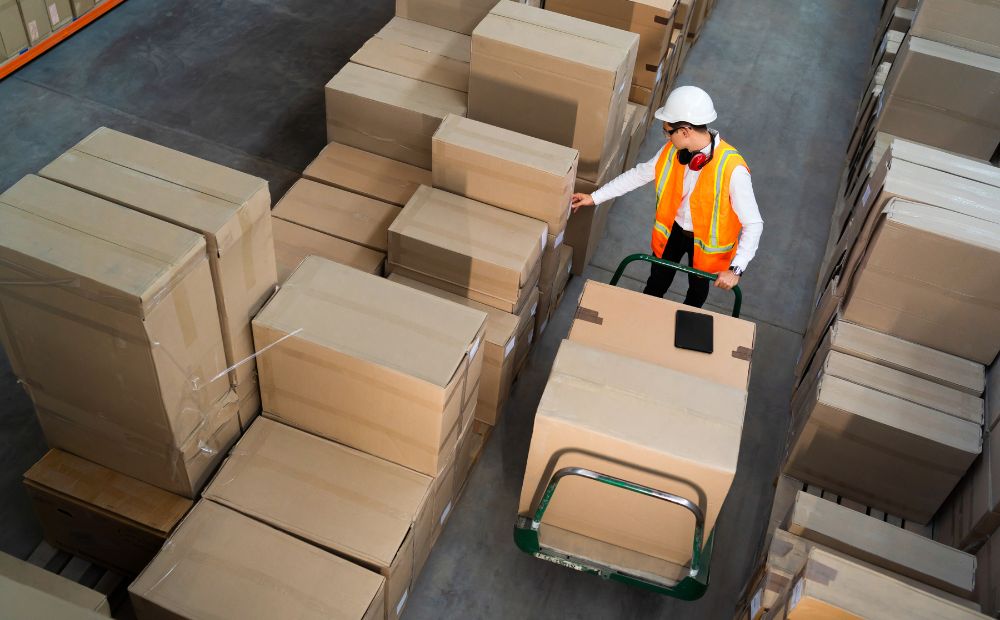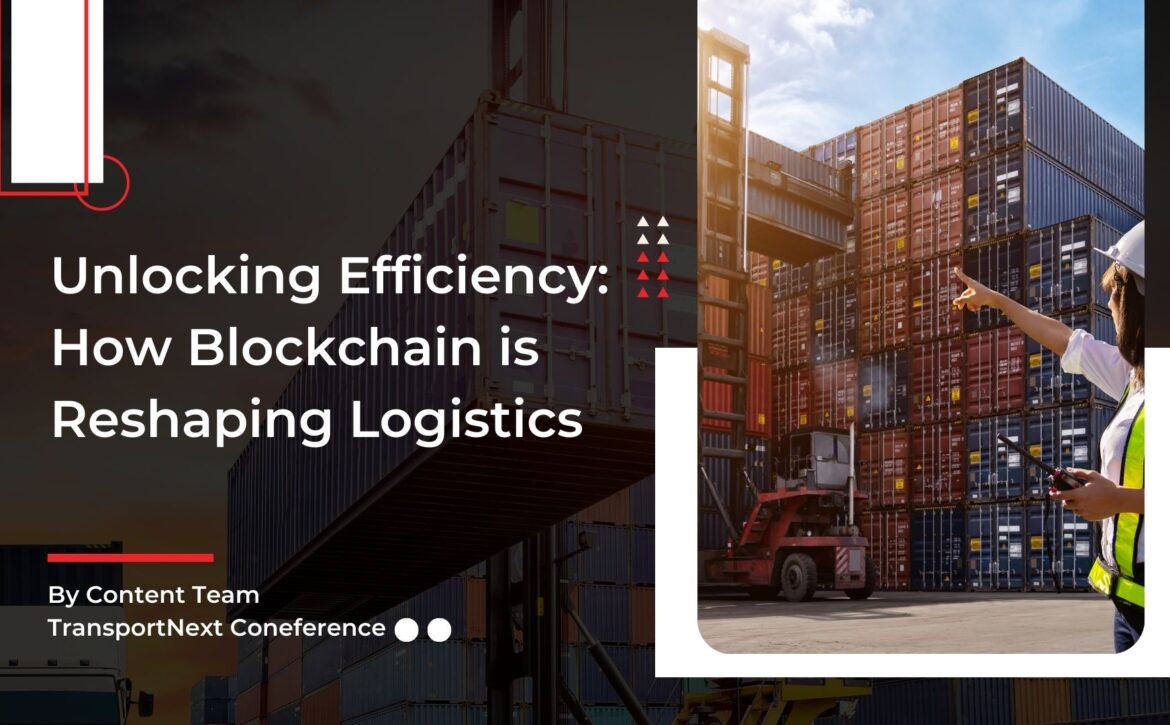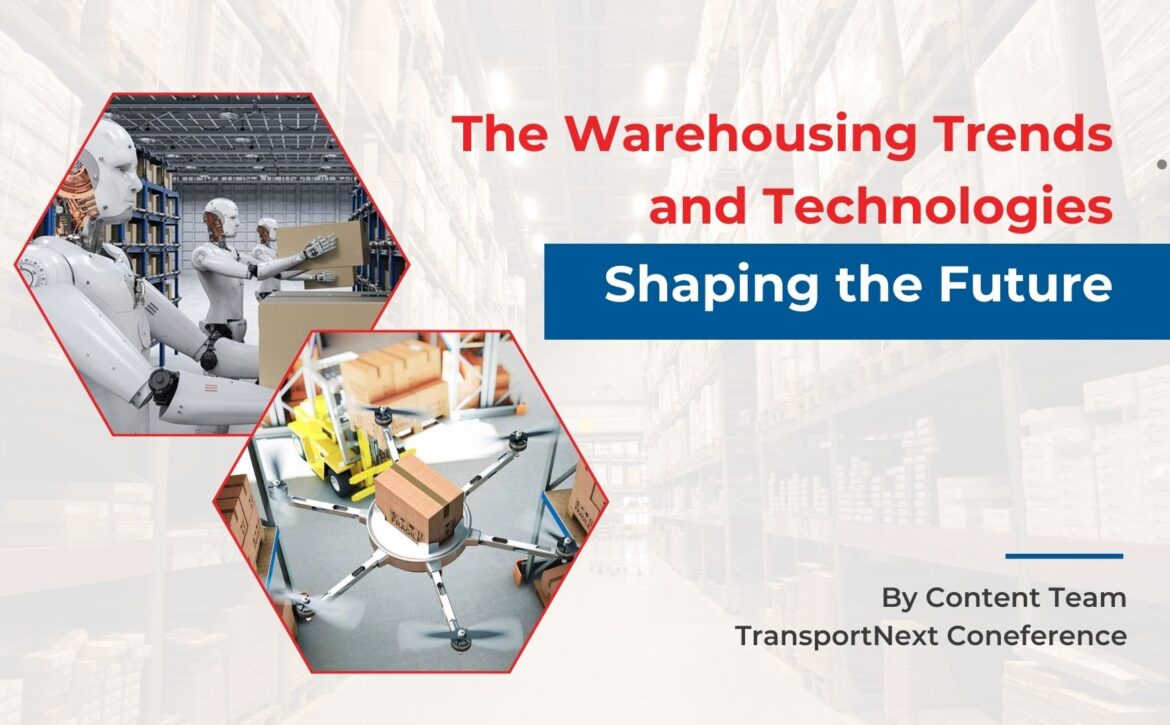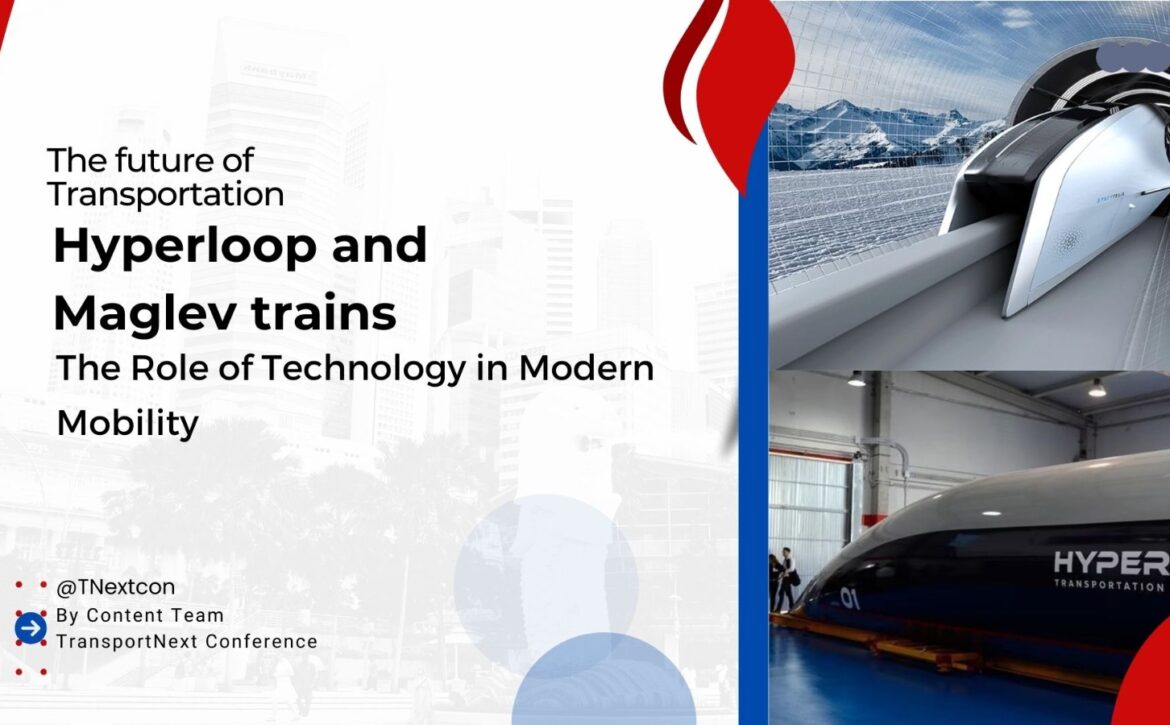Unlocking Efficiency: How Blockchain is Reshaping Logistics
Blockchain Technology is a decentralized digital ledger system that offers unparalleled security and transparency. By securely recording and linking data in encrypted blocks, blockchain ensures data integrity and prevents tampering. Its decentralized nature eliminates the need for intermediaries, streamlining processes and reducing costs. With its ability to automate tasks through smart contracts and enhance trust through transparent, immutable records, blockchain is revolutionizing industries such as logistics, finance, and healthcare, ushering in a new era of efficiency and accountability.
Recently, a term ‘Blockchain’ is becoming increasingly common in the world of Logistics and beyond. However, grasping the true essence of the term Blockchain can be elusive, appearing more as a buzzword than a concept readily understandable to a layman. As blockchain evolves and becomes more accessible, it’s essential to understand its working, mechanisms, and its growing importance in our digital landscape of Logistics. Blockchain is a secure method of recording information, which cannot be altered or manipulated easily.
It is basically a technology that offers a decentralized digital ledger system. Through global peer consensus, it secures data integrity. Each encrypted block is linked and interconnected, making data modification nearly impossible without altering the entire chain and gaining network consensus. This ensures that once data is in the blockchain, it becomes difficult to change, promoting trust and security.
Table of Contents

Businesses in Logistics and Transportation Industry rely on adapting to customer demands and utilizing new technologies for cost savings and efficiency. Recently, blockchain technology is attempting and promising in addressing industry inefficiencies. However, still, there are many in the Industry who are unable to grasp its practical applications due to its complex nature and hype in the media.
The transportation industry has room for improvement in payment and dispute resolution processes as well as reducing administrative costs. Currently, there are significant delays in payment processing, with businesses waiting an average of 42 days to receive payment. This ties up billions of dollars that could be better utilized to enhance business operations and customer service. Additionally, administrative costs have skyrocketed, comprising up to 20% of transportation expenses due to excessive reliance on paper-based transactions.
An experiment conducted by IBM and Maersk demonstrated the inefficiencies in the system by tracking a simple shipment of flowers from Mombasa, Kenya, to Rotterdam, Netherlands. This shipment involved over 30 organizations and required over 200 transactions, highlighting the need for streamlined processes in the industry.
In the realm of logistics and transportation, blockchain emerges as a transformative technology offering numerous benefits.
Enhanced Security:
A key feature, as utilizing a digital signature mechanism ensures transactions are fraud-resistant, safeguarding data integrity against unauthorized alterations. This contributes to a secure environment where only users with specific digital signatures can make changes.
Decentralized Operations:
Sets blockchain apart from traditional systems as transactions are processed through mutual consensus among users, eliminating the need for regulatory approvals from entities like governments or banks. This decentralized approach promotes smoother, safer, and quicker transactions within the logistics and transportation sector.
Automation Capabilities:
Play a vital role in streamlining processes within logistics and transportation. Blockchain’s programmable nature enables the automation of various actions, events, and payments based on predefined triggers. This automation enhances efficiency and reduces manual intervention, offering a more seamless experience for users in the industry.
Following is the List of Advantages offered by Blockchain Technology improvising the logistics and transportation industry:
Blockchain upgrades Freight tracking:
Blockchain technology plays a pivotal role in transforming freight tracking processes within the transportation industry. The inherent challenges of authentication and data reliability are effectively addressed through the implementation of blockchain solutions. Conventional systems, which heavily rely on Electronic Data Interchange (EDIs) and Application Programming Interfaces (APIs), are often susceptible to issues such as misinterpretation and data manipulation, posing significant risks to the integrity of the global supply chain.
By leveraging blockchain technology, the authentication of data is fortified through a secure and tamper-proof system where the entire network collaborates to validate information. This heightened level of reliability not only enhances tracking accuracy but also contributes to the preservation of goods, particularly in temperature-controlled transportation scenarios.
Using IoT and AI Blockchain increases efficiency in Monitoring and communication:
- IoT and Blockchain Integration in Cargo Monitoring: By utilizing IoT sensors in shipping vehicles, companies can accurately measure cargo volume, reducing costs and optimizing shipping processes. Blockchain technology ensures secure transmission and storage of this data, enhancing transparency and efficiency.
- Temperature Monitoring for Pharmaceutical Shipments: Swiss firm SkyCell utilized IoT-enabled air freight containers to monitor temperature, humidity, and location of pharmaceutical shipments. With blockchain technology, they reduced temperature deviations to less than 0.1% and maintained an immutable record of documentation throughout the shipping process, ensuring the integrity of valuable products.
- V2V Communication in Trucking: Implementing Vehicle to Vehicle (V2V) Communications allows freight vehicles to form platoons, enhancing fuel efficiency and safety. Storing and validating V2V data on the blockchain streamlines operations for transportation companies worldwide, optimizing resource usage and improving overall road safety.
Easier Carrier Onboarding with Blockchain Technology:
Blockchain creates a decentralized network holding carrier records, streamlining onboarding processes in the transportation industry. Let us look into an example to understand better. A freight broker needs to assign a load to a new carrier but can’t proceed until the carrier is properly onboarded. In a time-sensitive situation, delays can be debilitating. Hence carrier onboarding stands to gain significant benefits which include:
- Efficiency: Blockchain enables quick verification of carrier records, eliminating delays in onboarding processes.
- Security: Information stored on the blockchain is nearly impossible to falsify, ensuring the trustworthiness of carrier records.
- Decentralization: The decentralized nature of blockchain ensures that carrier records are accessible across the transportation and freight industry, enhancing transparency and accessibility.
- Effective fleet tracking:
Methodical tracking extends beyond delivery performance to keep a hold on the individual performance history of fleet vehicles. Blockchain technology proves extremely useful in verifying the past performance and maintenance history of second-hand delivery vehicles for both large corporations and small businesses. While services like CarFax exist as intermediaries for this purpose, blockchain eliminates the need for a middleman by securely storing and validating all relevant information for buyers and sellers.
Jack Legler, Technical Director of the American Trucking Associations’ Technology & Maintenance Council, anticipates the widespread adoption of distributed ledger technology in trucking contract transactions. He foresees blockchain-based systems becoming standard for warranty claims and truck parts supply chain transactions. By establishing a secure and immutable ledger for all used parts and vehicles, pricing determinations and other purchasing factors can be standardized and made more reliable.
Blockchain technology helps in making Load boards more reliable:
Improving the dependability of load boards is a priority for transportation firms, given the common issue of data confusion and duplication. With blockchain, shippers can list timestamped loads, guaranteeing their accuracy and consistency across a decentralized network. This prevents the duplication of loads and ensures data reliability. For instance, blockchain eliminates the necessity for brokers by validating load data and making it visible directly to load boards. By timestamping and storing load details on a decentralized network, blockchain ensures accessibility and transparency across multiple load boards.
Blockchain technology through Smart contracts cuts costs and eliminates middlemen:
Smart Contracts, perhaps the most impactful blockchain feature for the freight industry, automate tasks based on predefined conditions, eliminating the need for intermediaries. For instance, a company can use a Smart Contract to automatically release payment to a shipper upon the item’s arrival at its destination, streamlining processes and reducing manual intervention. Jeff Garzik, CEO of Bloq, points out the inefficiencies of current supply chains reliant on paper-based systems, where administrative processes involve multiple channels of approval, increasing the risk of errors and fraud.
By leveraging blockchain, Smart Contracts have the potential to streamline administrative procedures, significantly reducing costs and minimizing the potential for errors. Considering that administrative expenses can represent up to 20% of overall transportation costs, the adoption of Smart Contracts could lead to substantial cost savings and efficiency improvements in the industry.
Blockchain technology enables Sweetbridge to increase Liquidity in the Supply chain:
Sweetbridge offers a blockchain-based technology stack designed to tackle inefficiencies within the global supply chain, particularly focusing on liquidity, operations, and flexibility. Their objectives are highly relevant and have the potential to significantly address existing challenges in the freight and trucking industry, such as liquidity issues and operational inefficiencies. Sweetbridge has developed solutions to enhance settlement efficiency between supply chain parties, addressing a major concern in the transportation sector where billions of dollars are tied up in payment disputes daily.
On average, companies experience a 42-day wait for payment, leading to reduced liquidity and increased administrative burdens. By leveraging Sweetbridge for settlement processes, companies stand to reduce borrowing costs by 75% and boost liquidity by 25%. Additionally, Sweetbridge estimates that using their technology for settlement could increase profits for all parties in a supply chain by 2% to 4%.
Mentioning some companies as examples of how blockchain technology is being utilized:
Blockchain for Logistics Efficiency:
Accenture:
Partners with companies like Mastercard and Amazon Web Services to improve supply chain liquidity, operations, and flexibility using blockchain technology.
Slync.io:
Combines blockchain and AI to offer real-time insights into local and global shipments, automate workflows, and predict logistics challenges.
Chronicled:
Utilizes blockchain, AI, and IoT devices to automate traceability and approve financial transactions in the shipping industry, enhancing security and efficiency.
Koopman Logistics:
Employs blockchain to streamline automotive transportation processes, reducing paperwork, expediting payments, and enhancing security.
Blockchain for Logistics Tracking:
Microsoft:
Azure’s blockchain features track items along supply chains, aiding compliance standards and facilitating faster transactions between financial institutions.
Oracle:
Intelligent Track and Trace records data from multiple sources, providing a comprehensive view of logistics processes and enabling faster operations.
CargoLedger:
Develops blockchain-based software for logistics, reducing waste and providing real-time insights into cargo movement while offering paperless order processing.
Smart Contracts for Logistics Transparency:
IBM:
Applies distributed ledgers to define company-specific rules, create smart contracts, and develop immutable records of data, ensuring data security and transparency.
MuleChain:
Utilizes blockchain-based smart contracts for decentralized P2P personal delivery networks, ensuring secure transactions between shippers and “mules.”
dexFreight:
Offers a blockchain-backed P2P marketplace for shipping and hauling, featuring encrypted identity management, smart contracts, and tokenized payments for increased transparency.
Blockchain for Logistics Transactions:
Sweetbridge, Inc.:
Uses blockchain to improve supply chain liquidity and flexibility, settling payment disputes quickly with real-time auditing ledgers and smart contracts.
OpenPort:
Modernizes cash flow issues in traditional logistics processes with blockchain-based digital ePOD, providing real-time shipment tracking and enforcing digital contracts.
300cubits:
Introduces cryptocurrency tokens for the logistics industry, ensuring trust and accountability through smart contracts for product shipping and quality standards.
Blockchain for Logistics Security:
Guardtime:
Utilizes blockchain for maritime logistics, employing smart encrypted contracts and decentralized tracking to verify data quickly and protect against cyber attacks.
Skuchain:
Offers ledger technologies for logistics, including Proof-of-Provenance codes for track-and-trace and Zero Knowledge Collaboration for enhanced trust among supply chain parties.
SyncFab:
Streamlines manufacturing supply chains with real-time quotes, smart contracts, and product tracking, serving clients like Amazon, NASA’s Jet Propulsion Lab, and Google.
SkyCell:
Specializes in pharmaceutical shipping containers with temperature barriers, employing blockchain for operational simplification and theft prevention.
Provenance:
Increases transparency in the retail industry by documenting product origination and showcasing supply chains on a blockchain ledger, promoting accountability and trustworthiness among retailers. As with technology, it comes with its challenges. Implementing blockchain in the logistics industry presents several challenges. Privacy concerns arise due to the transparent nature of blockchain, risking the exposure of sensitive individual and organizational data such as wages, personal information, and performance records.
Managing confidential information becomes essential amidst the push for transparency, leading to tensions regarding information sharing. Accessibility issues may hinder smaller companies, particularly in less developed regions, from adopting blockchain due to limited resources and knowledge, potentially widening the digital divide. Additionally, staff training poses a challenge as implementing blockchain requires a diverse skill set and understanding of economics and business operations, necessitating investment in training or hiring individuals with the necessary expertise.
Despite the challenges, Blockchain has the potential to revolutionize risk management practices by identifying and addressing key factors that jeopardize project success. To sum up in simpler terms, The use of blockchain in logistics helps in tracking shipping container movements including transparent and immutable records of their journey. It also enables Logistic companies to analyze past shipping data and help them determine faster supply chain routes for future trips which reduce their transit times and bring more efficiency.
Implementing blockchain in logistics removes middlemen and unnecessary steps from supply chain processes, reducing costs and improving transparency. Utilizing smart contracts on blockchain platforms automates processes and reduces bottlenecks and clerical errors in logistics operations, ensuring smoother transactions and operations. Employing blockchain technology also creates transparent and immutable contracts that hold all parties involved in logistics accountable for their actions, fostering trust and integrity within the supply chain. Recognizing and leveraging new opportunities and emerging technologies is paramount for the logistics industry seeking to gain a competitive edge through evolving blockchain technology.
The annual premier worldwide event, the TransportNext Awards, Conference, and Expo organized by Next Business Media in Singapore and the United States presents an opportunity to delve into the utilization of blockchain technology in Logistics and Transport industry. The transport and logistics community throughout the rest of the world are served by the Singapore edition. By taking advantage of Singapore’s advantageous position, it offers a forum for global cooperation and knowledge sharing. TransportNext Singapore provides enlightening talks, engaging workshops, and a large expo. It also highlights innovative solutions and promotes strategic alliances.
The TransportNext Awards, which honor achievements in the sector, are the focal point. This Logistics event guarantees an unmatched networking and growth-promoting experience because of its global reach and dedication to Logistics and Transportation industry improvement.





